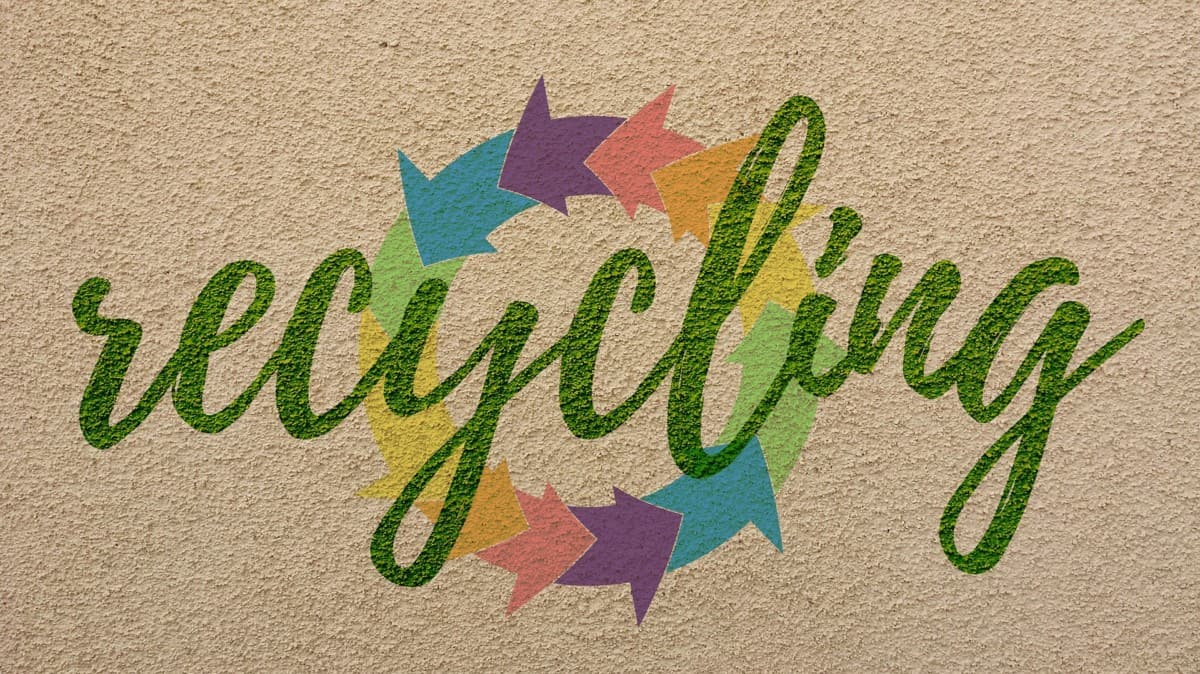Can Solar Panels Be Recycled?
Can solar panels be recycled? Yes, solar panels can be recycled. It’s worth noting that the PV modules used to make these panels are mainly composed of plastic, glass, and aluminum. Well, these three materials can be recycled easily, especially in large quantities.
Although there is a common misconception that solar panels can’t be recycled, what people are not aware of is that the whole process is simply quite complex. As a result, there are very few recycling plants. So, there is still a need for more recycling plants to be established. Besides that, more research studies have to be conducted in order to find ways to easily and cheaply recycle the components of solar panels.
Even so, there are two main methods of recycling solar panels and you will find more about them in the sections below.
The Working Mechanism Involved in Solar Panel Recycling
Recycling solar panels requires extensive preparation. Depending on the type of panel, the metal, plastic, and glass components have to be all recycled independently. That’s why they must be removed from the single solar panel product to make the recycling process more efficient.
Its also worth noting that the frame, junction box, and cable have to be first removed from the solar panels. Both thin-film and silicon-based solar panels have to be shredded or crushed and then the materials have to be separated mechanically before they are sent to different recycling points.
In some cases, such as in the case of thin-film-based solar panels, some components have to undergo delamination, a chemical process that’s used to separate the glass’s polymer layer from the semiconductor material.
Other components such as aluminum, silicon, insulated cable, glass, and copper, etc. can be separated chemically or mechanically before they are recycled. Besides that, other recycling techniques involve the use of thermal processes that are designed to burn the panel’s polymers.
There are still other innovative techniques being designed to optimize the recycling process and ensure that the manufacturers attain recycled materials with the highest level of purity. For instance, a French company known as Veolia normally uses robots in order to separate components of silicon-based panels before they are recycled.
The Process of Recycling Solar Panels
Can solar panel be recycled there are two main categories of solar panels and they both require different recycling processes. While silico-based panels are the most common, it’s important for users to also understand how to recycle solar panels made with thin-film-based materials.
Silicon-Based Solar Panel Recycling
The process starts with disassembling the solar panel into glass and aluminum parts. Generally, more than 90% of these components can be recycled. for instance, almost 95% of the glass parts can be reused in addition to the external metal parts which can be reused to remodel the cell frames.
It should be noted that the remaining material part is usually subjected to an almost 500 degrees celsius thermal processing unit. The aim of this process is to loosen the binding found between the cell elements. The high level of heat usually causes the encapsulating plastic to evaporate. What’s left behind are the silicon cells that will then be subjected to further processing.
Solar panel recycling companies have other support processes that utilize the evaporated plastic to ensure there is no waste. In this case, it will be reused as a source of heat, facilitating thermal processing even further. The process of thermal processing usually separates the green hardware with more than 80% of the components processed being ideal for re-use.
The remaining 20% will be subjected to further refinement. that’s when the wafers i.e., the silicon particles are etched away with the use of an acid. Thereafter, the broken wafers have to be melted before they are used to manufacture new silicon modules. In the end, almost 85% of the silicon material would have been recycled.
Thin-Film-Based Solar Panel Recycling
Unlike the process of recycling silicon-based solar panel, the thin-film-based solar panel requires more drastic processing.
For starters, you have to put the components of the thin-film panel into a shredder. This process is to ensure that the particles measure less than 5 mm which is the ideal size that ensures the breakdown of the lamination that keeps the inside material together.
The remaining components feature solid and liquid materials and they are usually separated by using a rotating screw. In the end, the solid components of the solar panel will be left inside the rotating tube while the liquid will dip into the container.
Both the solid and liquid materials will undergo further processing. Solid matter contains contaminants made of interlayer materials.
Due to the light nature of these contaminants, they are usually removed by surface vibration. Thereafter, the remaining solid is rinsed and what’s left behind is simply pure glass. In the end, almost 90% of the panel’s glass elements would have been recycled.
Meanwhile, the recycling process of the liquids usually continues with precipitation and then the dewatering process. These processes are usually done to enhance the liquid’s level of purity. Thereafter, the resulting substance is normally subjected to a metal processing process in order to fully separate the semiconductor materials.
Note: the next stage after this process normally depends on the technology used to produce the thin-film-based solar panels. However, almost 95% of semiconductor materials are usually reused.
Lifetime and Disposal of Solar Panels

The issue of recycling solar panels is based on their disposal as well as their lifetime. The life expectancy of these products is around 30 years before they start to decommission. For users, during this time range, the effectiveness of the PV panels will decrease by almost 20%.
Generally, the power efficiency of a solar panel will decrease by about 10% within the first 10-12 years. This amount is bound to increase by 20% when the panel reaches 25 years and so on.
However, mishaps can still happen in between and you might end up disposing of your solar panels before it even reaches their life expectancy. While the disposal of PV panels is simply under general wastes, it’s important that they are regulated.
That’s why recycling processes have to be put in place. It’s estimated that solar panel waste can accumulate almost 60 million tons of waste by 2050 if effective recycling processes aren’t implemented. So, what are some of the expected benefits of recycling solar panels?
Benefits of Solar Panel Recycling
Recycling solar panels helps to prevent the accumulation of material waste that ends up in landfills. The number of solar panels installed annually has rapidly increased over the past few years and this means that the rate of solar panel disposal is also bound to soon increase.
While solar panels have lasting lifetimes, they can be damaged by environmental factors as well as accidents during installation or transportation. It’s estimated that the rate of early failures of PV modules is expected to reach 60M tons worldwide by 2050. Note that this is just waste from the PV modules alone and there could be other associated wastes.
Besides that, the recycling of solar panels is bound to create a circular economy by creating more jobs. It’s estimated that recycling PV modules can help to add more job opportunities in the global economy at approximately a recovery value of more than $10 billion by 2050.
This expected job influx will ensure that wastes are effectively handled and that 2 billion solar panels can be made afresh without the need to exploit fresh raw materials. As more and more businesses continue to choose solar power systems, there will definitely be more economic opportunities.
Why Is it Difficult to Recycle Solar Panels?
A silicon-based solar panel, for instance, is composed of cells i.e., sheets or layers of silicon crystal. Besides that, each cell is usually sandwiched between a glass and aluminum layer. Separating all these components requires time and other resource investments.
It takes a considerable amount of energy in order to effectively extract hazardous metal components. Manufacturing companies also have to invest in different processes since separating all these panel components requires complex processes that may be potentially expensive. In fact, in some cases, recycling companies have ended up spending more to recycle solar panels compared to the cash involved in the production of new solar panels.
What to Expect in the Future?
Solar panels are meant to provide us with green energy and help reduce global warming. But their use also comes with waste disposal issues and landfilling all of which are critical in the conservation of the environment.
Generally, solar panels have to be recycled if we want to save our planet and conserve the environment. While the current recycling process can be quite demanding and expensive, there are still many companies that are pursuing other alternatives to facilitate the recycling process and how to make the actual solar panel manufacturing process cleaner.
There are also ongoing research technologies that seek to change the use of silicon cells with materials such as perovskite. But regardless of what might be discovered in the future, it’s clear that solar panels can and should be recycled. If you have found this information helpful please share it!
Recent Posts
Understanding Energy and Electricity: The Power For Progress
Energy and Electricity Energy and electricity are integral components of modern life, powering everything from homes and businesses to transportation and communication. Without them, the...
The Future of Wind Energy The future of wind energy is set to play a critical role in addressing global energy needs while combating climate change. As renewable energy sources like wind and...


